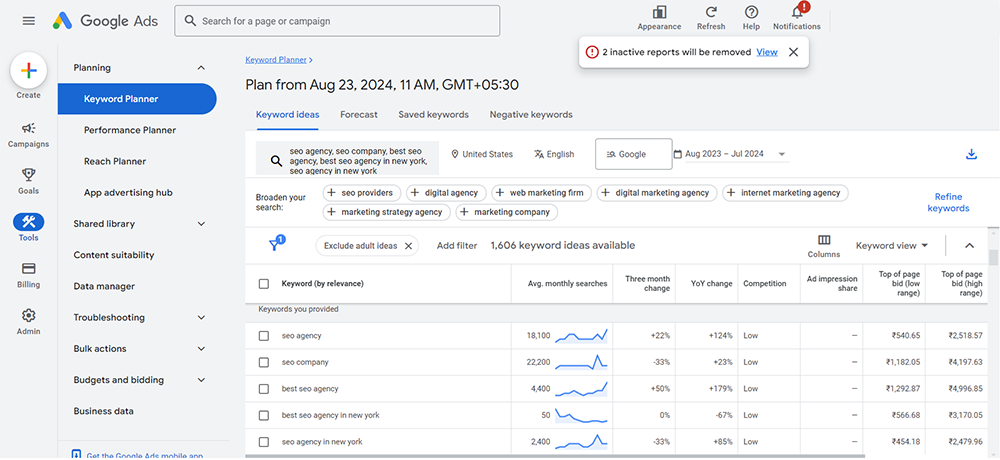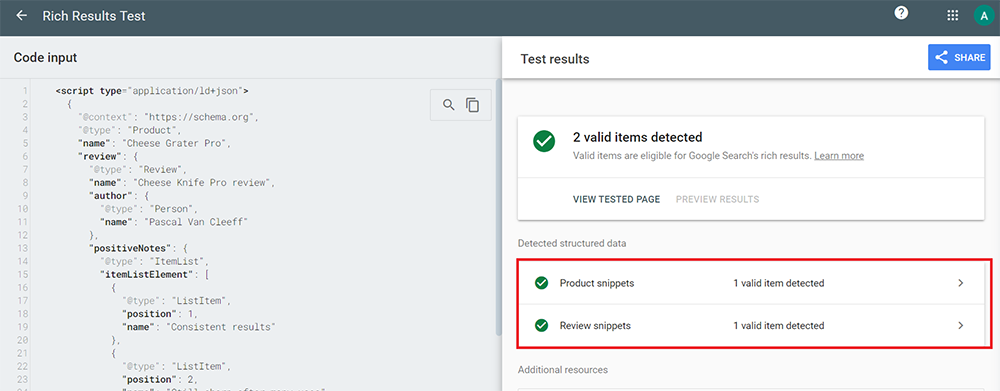7 E-commerce SEO Strategies to Futureproof Your Online Store

With new online businesses surfacing daily, the digital shopping experience is becoming increasingly convenient and accessible. Shoppers now have a whole world of options at their fingertips. This convenience has altered their purchasing habits, which is evidently clear as 53% of consumers now research products online before buying. Likewise, e-commerce sales are anticipated to reach US$4,117.00 billion in 2024. This simply means that the war for online visibility is going to be even more intense.
To cut through the noise and capture consumer interest, businesses must adopt future-proof e-commerce SEO strategies. Most online businesses utilize SEO in some capacity, whether managed in-house or by a specialized SEO agency. The companies that dominate Google’s search results are usually those that take SEO seriously and recognize its potential impact.
This e-commerce SEO checklist will offer an in-depth exploration of the best e-commerce SEO strategies, techniques, and tactics to help you make better marketing decisions and future-proof your online store.
What is an E-commerce SEO Strategy?
E-commerce SEO is a strategic approach to enhance an online store’s digital presence on search engine results pages (SERPs). The primary goal of an e-commerce SEO strategy is to attract more organic traffic and lead to an increase in sales. Unlike paid advertising, SEO focuses on improving a site’s ranking through various optimization techniques, making it a cost-effective way to boost online presence in the long run.
SEO trends—like voice search optimization and AI-driven search algorithms—have taken the front row in digital marketing techniques. A well-implemented e-commerce SEO strategy harnesses these trends to drive more traffic, generate leads, and significantly boost sales and conversion rates.
How to Create an SEO Strategy for an E-Commerce Website?
Creating an effective SEO strategy for an e-commerce website is essential to ensuring your products are easily found by the right customers. With the right approach, you can boost your site’s visibility, drive traffic, and turn visitors into loyal consumers.
Creating Consumer Personas
You can’t sell your product or services to your consumers if you don’t even know who they are. Creating detailed buyer personas helps you step into their shoes and discover their needs, wants, and behaviors. By creating buyer personas, you can tailor your marketing efforts to resonate more deeply with the people you want to reach.
You can start by gathering data from tools like Google Analytics or Ahrefs. These platforms provide a wealth of information about your current website visitors, such as their age, location, gender, and other demographic details. This data helps paint a clearer picture of who is most interested in your products or services.
But numbers alone don’t tell the whole story. It’s also important to bring in your industry knowledge and experience. If you are familiar with your market, you likely have insights into customer behaviors—whether they are more budget-conscious or prefer premium offerings.
This personal touch not only helps you reach your audience more effectively but also builds stronger connections, ultimately leading to higher engagement and conversion rates.
Set a Well Defined And Achievable Objective
A vague goal like “increase website traffic” is hard to measure and even harder to achieve. Instead, break it down into more precise goals. You might aim to “increase organic traffic to the blog section by 30% over the next six months.” This level of detail gives you a clear aim to work towards and makes it easier to track your progress. The best approach to goal-setting in SEO is to use the SMART framework, which ensures that your objectives are Specific, Measurable, Achievable, Relevant, and Time-bound.
Next, ensure that your goals are measurable. Quantifying your goals allows you to monitor your success and adjust your strategy as needed. If your goal is to improve SERP rankings, you might measure this by tracking the ranking positions of specific keywords over time. Similarly, if you aim to enhance brand awareness, you could track metrics like direct traffic, social media mentions, or the number of backlinks from reputable sites.
Achievability is another crucial aspect. While it’s important to be ambitious, your goals should be within reach, given your current resources and constraints. For instance, doubling your organic traffic in a month might not be realistic, but a steady 10-15% growth each month could be a more attainable target. Setting achievable goals helps keep your team motivated and focused.
Performing Keyword Research And Strategy
Keyword research is the foundation of an e-commerce SEO strategy. The first step in keyword research is to think like your customers and understand the language they use while searching for products like yours. By embedding these keywords naturally into your site’s content, especially on product pages, you are creating a bridge that connects your store with the people actively looking for what you offer.
This approach not only draws in more relevant traffic but also helps you speak directly to your customers’ needs, making your e-commerce site a go-to destination. You can start by brainstorming keywords that are directly related to your brand’s products or services. SEO tools like Google Keyword Planner provide insights about search volumes and keyword difficulty levels and even suggest related terms that you might not have initially considered.
AdLift implements the same approach in all its strategies, and we did the same for Walmart. As Walmart’s SEO and content marketing agency, our expertise in content optimization played a critical role in this process. We began with in-depth keyword research, ensuring that Walmart’s content aligned with what users were searching for.
Then, we focused on refining Walmart’s on-page and technical SEO, improving URLs, schema, and meta tags. These technical enhancements were crucial in making Walmart’s content more visible to search engines while also improving the user experience. This approach led to a 125% increase in organic traffic and a 27% rise in the top 10 keywords.
Create a Content Plan
Laying the foundation for a successful e-commerce SEO strategy starts with crafting a solid content strategy. A well-structured content plan revolves around the keywords you have identified and aims to produce valuable content that resonates with your audience at every stage of their buyer’s journey.
Start by developing a content plan that fits best with your target keywords. This means identifying the topics that not only incorporate these keywords but also answer the questions your potential customers are asking. For example, if one of your keywords is “best running shoes,” you might create a series of blog posts or videos comparing different types of running shoes, discussing their features, and advising on how to choose the right pair.
Think about your audience’s needs and interests. What challenges do they face, and how can your content help them solve these problems? Only one format of content isn’t going to help you. So, try to include videos, infographics, and even interactive content like quizzes or calculators. Each content type caters to different learning preferences and helps keep your audience engaged.
It’s also important to think long-term. Your content plan shouldn’t just focus on immediate results but should also consider how to keep your audience engaged over time. You can regularly update your content to reflect new trends or changes in your industry.
Tracking Your Progress
If you want to make sure your SEO efforts truly pay off, then it’s essential to integrate a measurement plan that lets you track and assess your performance over time.
Begin by pinpointing key performance indicators (KPIs) that align with your long-term business goals. These could include organic traffic, keyword rankings, or conversion rates—each providing a vital snapshot of how well your e-commerce SEO strategy is performing. With your KPIs in place, use tools like Google Search Console to gather and analyze the data.
However, just collecting data is not enough. You need to review it regularly. If you see that a certain keyword isn’t ranking well, then it might be time to update your content or refine your SEO techniques. Similarly, if your conversion rates are lower than expected, you can dig into the user journey to identify the roadblocks and optimize accordingly.
Effective SEO Strategies to Increase Online Visibility
Now, let’s go through the e-commerce SEO strategies that you must implement to increase your brand’s online presence.
Tap into Voice Search Optimization
As voice search becomes increasingly popular, optimizing your e-commerce site for this trend becomes essential. Voice search, driven by devices like Amazon’s Alexa, Google Home, Apple’s Siri, and Microsoft’s Cortana, is changing the way consumers search for information and shop online.
To tap into this growing market, you will need to adjust your e-commerce SEO strategy specifically for voice search. Moreover, with 40% of adults now using voice search at least once per day, it’s clear that voice search is becoming a key component of online behavior. Unlike traditional text-based searches, voice searches are typically longer and more conversational. People tend to ask complete questions, like “Where can I buy organic coffee beans near me?” instead of just typing “organic coffee beans.” This means that your content should be optimized to answer these types of queries directly.
One way to optimize for voice search is by focusing on long-tail keywords and phrases that match how people speak naturally. Incorporating questions and answers into your content can also increase the chances of your website appearing in voice search results. Moreover, you should ensure that your website is mobile-friendly and loads quickly, as many voice searches are conducted on mobile devices.
Make Browsing More Engaging and User-Centric
With decreasing attention spans of the shoppers, the only thing that can keep them on your website is user experience. That’s why your website should captivate visitors from the moment they arrive.
Striking images or an engaging video can instantly grab attention and set the tone for what’s to come. However, beyond aesthetics, the ease of navigation is also crucial. Moreover, when users can quickly locate products or information, they are more likely to stay on your website.
Ultimately, a user-centric approach means building trust and delivering an experience that feels both intuitive and enjoyable. When visitors feel understood and valued, they are more likely to return, explore further, and make a purchase.
Boost Your Conversions with Clear CTAs
If you ever visit a store, and there’s a sign that says, “10% off,” but it’s tiny and tucked away in a corner. You would probably miss it. The same goes for your online store. A clear and compelling CTA can make all the difference. It guides your visitors on what to do next, whether it’s adding a product to the cart or making a purchase. By making these buttons or prompts visible and relevant, you help your customers move smoothly through their journey, leading to higher conversion rates.
For example, Birchbox’s website does an excellent job in this regard. The navy blue colored CTAs stand out against the minimalist black-and-white design, drawing the user’s eye and prompting them to take the next step.
Incorporating similar design principles into your e-commerce site—where CTAs are prominent, well-placed, and visually appealing.
Using the Right Content Optimization Techniques
To create an engaging narrative that sits well with your audience and builds trust, you need a strategy that combines solid research, strategic implementation, and ongoing refinement. Experience, Expertise, Authority, and Trustworthiness (E-E-A-T) is one such approach. It not only establishes credibility but also reassures readers that your website’s information is reliable.
AdLift has always remained updated with Google trends, and that’s why we integrated this strategy into Kremp Florist’s content strategy. For this account, AdLift’s focus extended to crafting engaging and SEO-friendly content that aligned with Kremp Florist’s brand voice and customer needs. By refining the narrative and ensuring the content was optimized for search engines, AdLift helped Kremp Florist connect more effectively with its audience. As Kemp Florist’s SEO and content marketing agency, we were able to increase the brand’s revenue by 129%.
Ensure the Use of Alt Text
Alt text is a brief description that’s added to the HTML code of an image. It can provide context for search engines, improve your visitor’s experience, and ensure your site is accessible to everyone.
Search engine crawlers can’t see images the way we do. So, they rely on alt text. For example, if you have a photo of a lawnmower on your site, adding alt text like “red lawnmower cutting grass” helps search engines associate that image with relevant keywords, improving your visibility in search results. This is particularly important for showing up in image searches.
Alt text is also essential for visually impaired users. Screen readers use alternative text to describe images to users who can’t see them, ensuring your content is accessible to all visitors. By including alt text for every image—even small buttons or thumbnails—you enhance SEO and comply with accessibility standards, like those outlined in the United States Rehabilitation Act.
Implement AR Features
Augmented Reality (AR) has become a tech trend that’s supposed to reach $1.19 trillion by 2032. This technology is also changing the way how your customers experience shopping online. For example, a shopper is browsing your website, trying to decide which furniture to buy. With AR, they can visualize that item right in their living room. They can see exactly how it fits, how it looks, and how it feels in their space—all before making a purchase. It’s like trying before buying from the comfort of their home.
This immersive experience turns shopping into an interactive adventure, making your brand memorable and your products irresistible. Shoppers feel more confident that what they see is truly what they will get, reducing the disappointment of products that don’t quite match up to expectations when they arrive.
However, the benefits don’t stop there. AR can also help your website stand out in search results with features like Google’s “View in 3D” button. This little detail can make a big difference, drawing more eyes—and clicks—to your site.
Increase Your Product’s Appeal with Schema Markup
Product schema markup is a powerful tool that can transform how your products appear in search results. By integrating it into your website, you can show important details like reviews, pricing, and availability directly within search results. This makes your listing stand out.
Now-a-days, shoppers want information fast and easy. With product schema markup, you are giving them the details they need upfront—whether it’s knowing that a product is in stock, has great reviews, or is available at a discount. This can be the deciding factor in whether they click on your listing or someone else’s.
Implementing product schema markup might sound technical, but tools like Google’s Structured Data Markup Helper make it simple. Even without coding knowledge, you can enhance your product pages and increase your chances of turning searchers into buyers.
Through product schema markup, you improve your search rankings while also making it easier for customers to find and choose your products.
How do you measure the Impact of Your E-commerce SEO Strategy?
To truly know if your e-commerce SEO strategy is working or not, you should measure the impact of your strategy that shows real progress and growth.
Keep an Eye on Organic Traffic
The first step is to look at how much traffic is coming to your site from search engines. If your e-commerce SEO strategy is effective, you will see an increase in organic visitors. Tools like Google Analytics are great for this. Simply check your organic traffic over time and see if there’s a steady climb.
Focus on Conversion Rates
Getting more visitors is great, but what really matters is what they do once they are on your site. Are they buying your products? By comparing conversion rates before and after you start your SEO campaign, you can see if those visitors are taking the actions you want.
Track Your Keyword Rankings
Another way to measure the impact of your e-commerce SEO strategy is to check where your site stands in search results for important keywords. If your strategy is on point, you should see your site move up in the rankings. Tools like Ahrefs or SEMrush can help you keep track of your keyword positions.
Look at Bounce Rate and Time on Page
A high bounce rate means users are leaving your website quickly, which isn’t a good sign. However, if people are sticking around longer and exploring more pages, it shows that your content is engaging and relevant. Improving these metrics is a clear indication that your e-commerce SEO strategy is attracting the right audience.
Listen to Your Customers
Last but not least, you will have to pay attention to what your customers are saying. If they are leaving positive reviews or engaging more with your content. Evaluating their feedback can give you valuable insights into how well your e-commerce SEO strategy is resonating with your audience.
Get More Eyeballs on Your Website with AdLift!
Future-proofing and boosting your storefront’s online visibility is essential in today’s cut-throat competition. We hope that this e-commerce SEO guide will help you craft a result-driven strategy. Focusing on the latest trends and monitoring the progress of your website will set your brand up for long-term success.
If you are looking to make the most of your SEO efforts and achieve tangible results, AdLift, an e-commerce SEO agency, is here to help. Our expertise in crafting customized e-commerce SEO strategies can enhance your brand’s visibility, drive more traffic, and increase conversions. With AdLift’s tailored solutions, you won’t just keep up with the competition. Instead, you can outshine them.








